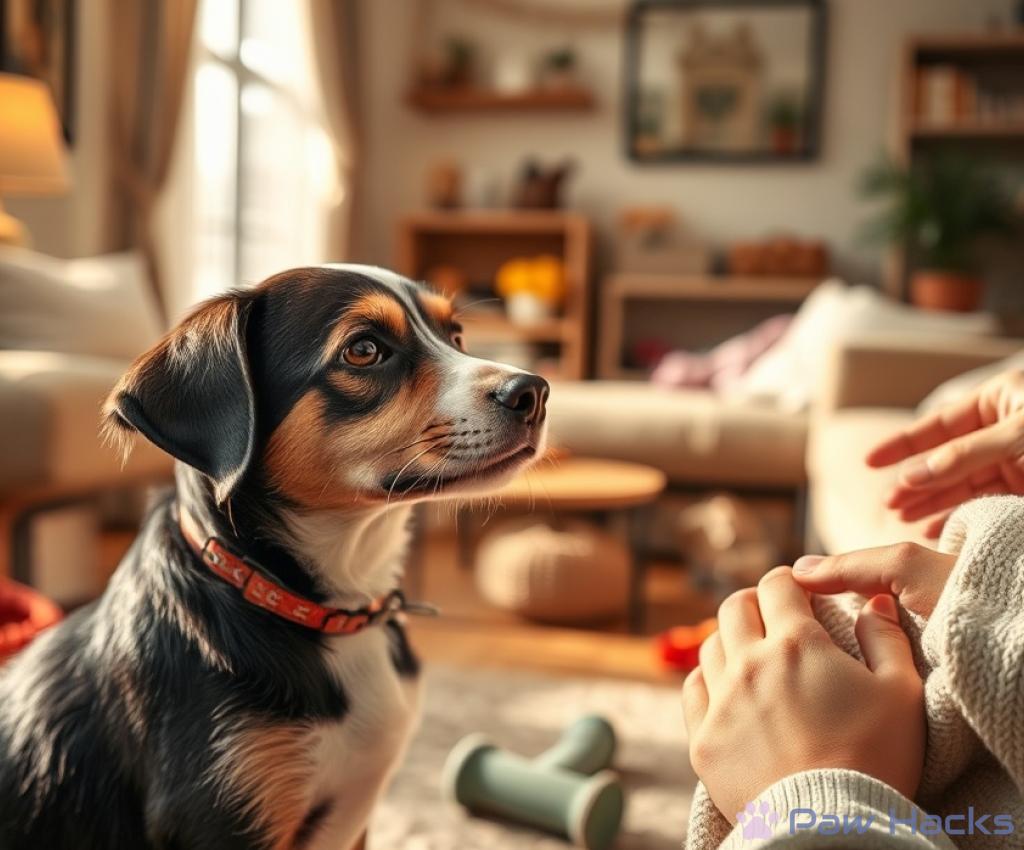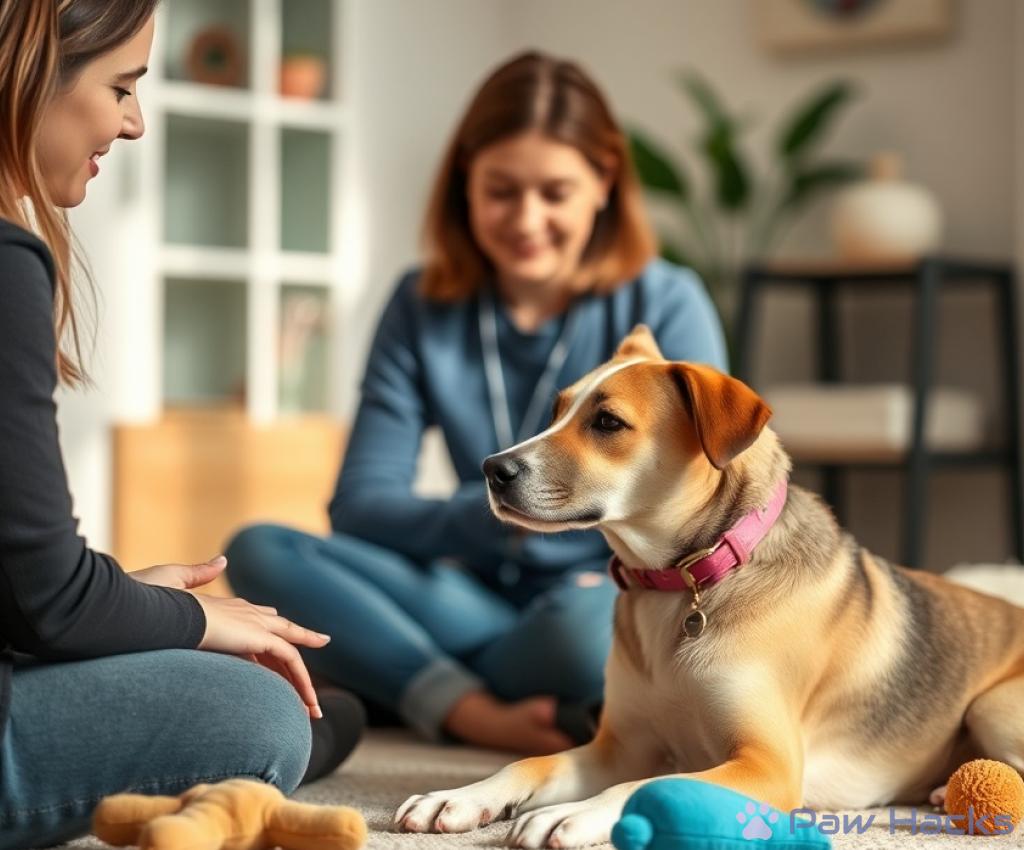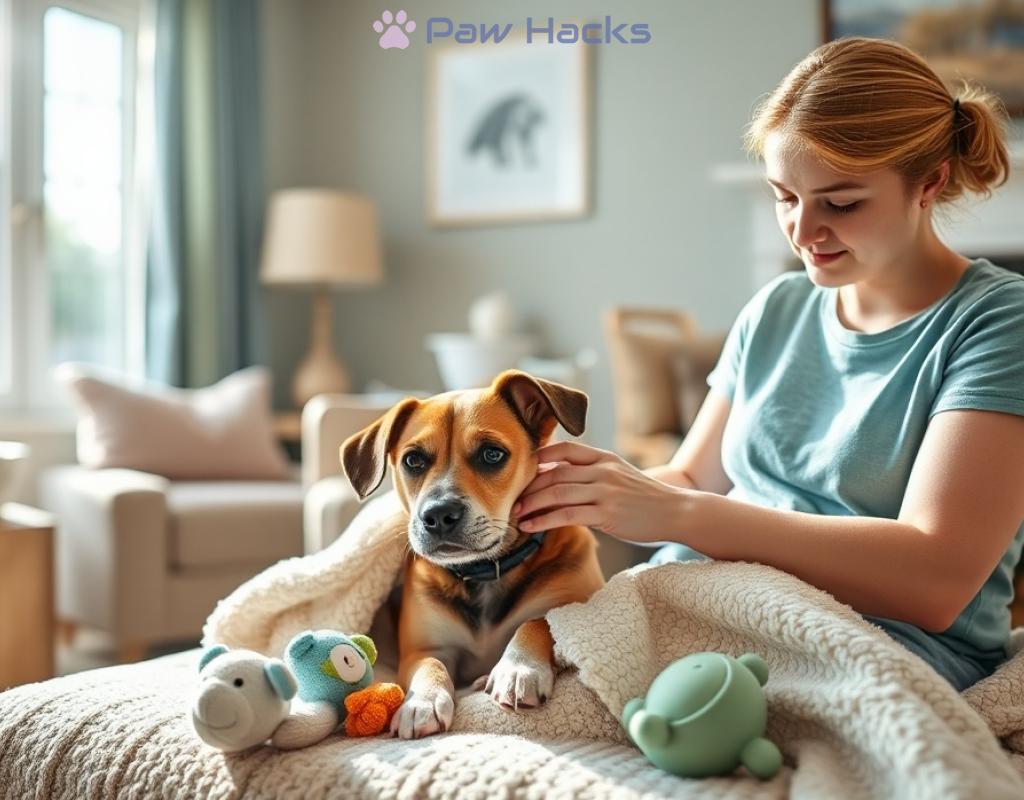Helping Rescue Pets Overcome Phobias
Understanding the Roots: Why Rescue Pets Develop Phobias

Many rescue pets come with a history that often includes trauma, neglect, or abandonment. These experiences can leave lasting emotional scars, leading to various phobias. Understanding the roots of these fears is the first step toward helping these animals heal and thrive in their new environments.
A pet’s early life is crucial in shaping its behavior and emotional responses. Rescue pets often have had negative experiences that create a foundation for fear. Here are some factors that can contribute:
- Abandonment: Pets that are abandoned may develop separation anxiety, fearing that their new owners will leave them too.
- Abuse: Animals that have faced physical or emotional abuse may react fearfully to certain stimuli, such as loud noises or sudden movements.
- Neglect: Lack of socialization or exposure to different environments can make pets fearful of new experiences.
Recognizing the specific phobias your rescue pet may have is essential for effective intervention. Common phobias include:
| Phobia | Description |
|---|---|
| Noise Phobia | Fear of loud sounds like thunder, fireworks, or vacuum cleaners. |
| Separation Anxiety | Intense fear of being left alone, often leading to destructive behavior. |
| Fear of Strangers | Anxiety around unfamiliar people, which can manifest as barking or hiding. |
By understanding the roots of these phobias, pet owners can provide a supportive environment that fosters trust and security.
Gentle Techniques: Effective Methods to Help Pets Conquer Their Fears

Rescuing pets is a noble act, but owning a rescue animal comes with its unique challenges, especially when it comes to helping them overcome deeply rooted phobias. Understanding their past and the fears they carry is crucial, but it’s equally important to employ gentle techniques that can effectively alleviate their anxiety. By using compassionate methods, pet owners can create a safe environment that promotes healing and builds trust.
Desensitization and Counter-Conditioning are two fundamental techniques that can work wonders for fearful pets. Desensitization involves gradually exposing your pet to the source of their fear in a controlled manner. For instance, if your dog is afraid of loud noises, you can start by playing recordings of thunder at a very low volume, gradually increasing it as your pet becomes more comfortable. Coupled with this, counter-conditioning helps to change your pet’s emotional response to the fear-inducing stimuli. During these sessions, rewarding your pet with treats or praise when they remain calm can significantly alter their perception of the situation.
Another effective strategy is Creating a Safe Space. It’s essential for rescue pets to have a designated area where they feel secure and protected. This space can be a cozy corner with their favorite blanket and toys. When they feel overwhelmed, they should have the option to retreat to this safe haven, which can help reduce anxiety. This sanctuary will not only provide comfort but also allows them to regain control over their environment, fostering a sense of safety and reassurance.
Additionally, Positive Reinforcement plays a pivotal role in helping rescue pets conquer their fears. By rewarding desired behaviors rather than punishing undesirable ones, you create an encouraging atmosphere. For example, if your cat approaches a new object that they typically avoid, offering a treat reinforces their bravery and encourages further exploration. This method not only boosts their confidence but also strengthens the bond between pet and owner, making the journey toward overcoming phobias a collaborative effort.
Creating a Safe Haven: Designing a Fear-Free Environment for Your Pet

Creating a nurturing environment for rescue pets is crucial for their emotional recovery, especially for those grappling with phobias. A well-designed safe haven can be the cornerstone of their healing journey, allowing them to feel secure and at ease. By thoughtfully arranging their surroundings, pet owners can pave the way for their furry companions to overcome their fears and build confidence in a loving atmosphere.
A safe haven should be more than just a physical space; it needs to be a sanctuary that resonates with comfort and security. When planning this area, consider the following elements that can create a calming effect on your pet:
Comfortable Bedding: Choose soft, cozy bedding that promotes relaxation. Pets appreciate a warm and inviting spot to curl up, which can significantly reduce their anxiety levels.
Enclosed Areas: Providing enclosed spaces such as a covered crate or a cozy tent can give pets a sense of protection. These areas mimic den-like environments that many animals instinctively seek when feeling threatened.
Familiar Items: Incorporate your pet’s favorite toys, blankets, or even an item of your clothing. Familiar scents and objects can create a sense of belonging and safety, encouraging them to relax.
Another vital aspect of designing a fear-free environment is to focus on sensory elements that can soothe your pet’s nerves. The aim is to create an atmosphere that minimizes stress triggers and promotes a sense of tranquility.
Lighting: Opt for soft, natural lighting instead of harsh fluorescent bulbs. Dim lighting can create a serene environment, allowing pets to feel less exposed and vulnerable.
Sound Management: Since many rescue pets may be sensitive to loud noises, consider using soundproofing techniques or playing calming music at low volumes. This can help mask unsettling sounds from the outside world.
Air Quality: Ensure proper ventilation and consider using essential oil diffusers with pet-safe oils like lavender. These scents can create a relaxing ambiance and help alleviate anxiety.
| Element | Purpose |
|---|---|
| Comfortable Bedding | Promotes relaxation and comfort |
| Enclosed Areas | Provides a sense of protection |
| Familiar Items | Creates a sense of belonging |
| Soft Lighting | Reduces exposure and vulnerability |
| Sound Management | Masks unsettling environmental noises |
| Air Quality | Promotes a relaxing atmosphere |
By implementing these strategies, you can create a haven that not only accommodates your rescue pet’s needs but also fosters an environment where they can heal and thrive. Remember, the goal is to cultivate a space that resonates with peace and security, enabling your pet to gradually confront their fears and emerge stronger.
The Power of Patience: Building Trust with Fearful Rescue Animals
When welcoming a rescue pet into your home, patience becomes your greatest ally. Many of these animals have faced significant hardships that affect their ability to trust. Understanding the importance of taking your time to build that trust is crucial for their emotional healing. Each small step forward is a milestone, and recognizing this can transform the journey of recovery into a collaborative and fulfilling experience.
Building trust with a fearful rescue animal is not a swift process; it requires dedication and understanding. It’s essential to approach each interaction with a sense of empathy, knowing that your pet may be reacting to past traumas. Every gentle interaction lays the groundwork for a bond that can transform fear into comfort. Start by allowing your pet to set the pace. For instance, let them explore their surroundings at their own speed rather than forcing them into new experiences. This autonomy fosters a sense of control, reassuring them that they are in a safe space.
Creating positive associations with various aspects of their environment can significantly help in building trust. Use treats, praise, and affectionate gestures to reinforce moments when your pet exhibits bravery, no matter how small. For example, if your dog approaches you for a pat, shower them with praise and a treat. This positive reinforcement not only encourages confidence but also strengthens the bond you share. Remember that consistency is key; your pet will learn to associate your presence with safety and kindness over time.
In addition, maintaining a calm demeanor is vital. Animals are highly intuitive and can pick up on their owner’s emotions. By projecting calmness and reassurance, you help them feel secure in their environment. If they sense that you are anxious or frustrated, they may retreat further into their shell. Instead, practice deep breathing and keep a serene atmosphere during interactions.
Success Stories: Inspiring Transformations of Phobic Rescue Pets
Every rescue pet carries a story, and for many, those tales are fraught with fear and anxiety. However, when given the chance, these animals can experience profound transformations that inspire us all. The journey from phobia to confidence is not just about overcoming fears; it symbolizes resilience, love, and the power of patience. Let’s explore some heartwarming success stories that illuminate the path to recovery for fearful rescue pets.
Bella, a once-timid terrier, was haunted by her fear of thunderstorms. Each clap of thunder would send her into a panic, often resulting in destructive behavior as she sought to escape the noise. Her new owner, understanding the importance of a gentle approach, implemented a desensitization program. By gradually exposing Bella to recorded thunder sounds at a low volume, paired with soothing praise and treats, she began to associate the noise with comfort rather than fear. Over time, Bella learned to relax during storms, even seeking out her cozy bed instead of hiding in a corner. Her story is a testament to how patience and consistency can lead to remarkable transformations.
Tilly, a rescue cat, arrived at her new home with a profound fear of human interaction. She would hide for days, emerging only when she felt completely alone. Tilly’s owner recognized the need for a strategy focused on building trust. By creating a safe space adorned with familiar items, she encouraged Tilly to explore at her own pace. Each time Tilly ventured out, her owner rewarded her with treats and soft, reassuring words. Over weeks of gentle encouragement, Tilly began to approach her owner, initially for treats and eventually seeking affection. Today, Tilly is a playful companion who greets her owner at the door, embodying the incredible journey from fear to trust.
These inspiring transformations highlight the potential for rescue pets to overcome their phobias when provided with a supportive environment. Each success story not only showcases the remarkable resilience of these animals but also serves as a reminder of the profound bond that can develop between pets and their owners. The journey may be filled with challenges, but the rewards of witnessing your pet thrive in the face of adversity are immeasurable.
Share this content:



